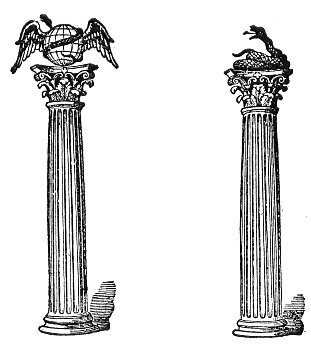No symbol of Deity can be appropriate or durable except in a relative or moral sense. We cannot exalt words that have only a sensuous meaning, above sense. To call Him a Power or a Force, or an Intelligence, is merely to deceive ourselves into the belief that we use words that have a meaning to us, when they have none, or at least no more than the ancient visible symbols had. To call Him Sovereign, Father, Grand Architect of the Universe, Extension, Time, Beginning, Middle, and End, whose face is turned on all sides, the Source of life and death, is but to present other men with symbols by which we vainly endeavor to communicate to them ‘the same vague ideas which men in all ages have impotently struggled to express. And it may be doubted whether we have succeeded either in communicating, or in forming in our own minds, any more distinct and definite and true and adequate idea of the Deity, with all our metaphysical conceits and logical subtleties, than the rude ancients did, who endeavored to symbolize and so to express His attributes, by the Fire, the Light, the Sun and Stars, the Lotus and the Scarabæus; all of them types of what, except by types, more or less sufficient, could not be expressed at all.
The primitive man recognized the Divine Presence under a
p. 514
variety of appearances, without losing his faith in this unity and Supremacy. The invisible God, manifested and on one of His many sides visible, did not cease to be God to him. He recognized Him in the evening breeze of Eden, in the whirlwind of Sinai, in the Stone of Beth-El: and identified Him with the fire or thunder or the immovable rock adored in Ancient Arabia. To him the image of the Deity was reflected in all that was pre-eminent in excellence. He saw Jehovah, like Osiris and Bel, in the Sun as well as in the Stars, which were His children, His eyes, “which run through the whole world, and watch over the Sacred Soil of Palestine, from the year’s commencement to its close.” He was the sacred fire of Mount Sinai, of the burning bush, of the Persians, those Puritans of Paganism.
Naturally it followed that Symbolism soon became more complicated, and all the, powers of Heaven were reproduced on earth, until a web of fiction and allegory was woven, which the wit of man, with his limited means of explanation, will never unravel. Hebrew Theism itself became involved in symbolism and image-worship, to which all religions ever tend. We have already seen what was the symbolism of the Tabernacle, the Temple, and the Ark. The Hebrew establishment tolerated not only the use of emblematic vessels, vestments, and cherubs, of Sacred Pillars and Seraphim, but symbolical representations of Jehovah Himself, not even confined to poetical or illustrative language.
“Among the Adityas,” says Chrishna, in the Bagvat Ghita, “I am Vishnu, the radiant Sun among the Stars; among the waters, I am ocean; among the mountains, the Himalaya; and among the mountain-tops, Meru.” The Psalms and Isaiah are full of similar attempts to convey to the mind ideas of God, by ascribing to Him sensual proportions. He rides on the clouds, and sits on the wings of the wind. Heaven is His pavilion, and out of His mouth issue lightnings. Men cannot worship a mere abstraction. They require some outward form in which to clothe their conceptions, and invest their sympathies. If they do not shape and carve or paint visible images, they have invisible ones, perhaps quite as inadequate and unfaithful, within their own minds.
The incongruous and monstrous in the Oriental images came from the desire to embody the Infinite, and to convey by multi-plied, because individually inadequate symbols, a notion of the Divine Attributes to the understanding. Perhaps we should find
p. 515
that we mentally do the same thing, and make within ourselves images quite as incongruous, if judged of by our own limited conceptions, if we were to undertake to analyze and gain a clear idea of the mass of infinite attributes which we assign to the Deity; and even of His infinite Justice and infinite Mercy and Love.

Moe is the founder of GnosticWarrior.com. He is a father, husband, author, martial arts black belt, and an expert in Gnosticism, the occult, and esotericism.





